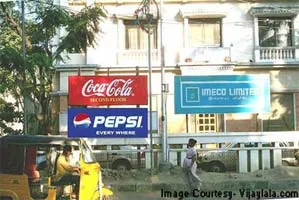
Ideal for small startups
I suppose all of us have some idea of what Guerrilla marketing is all about. Unwittingly many of us have been witness to some of the best “G-Marketing” that can be found. Unlike conventional marketing tools
“Guerrilla” style utilizes innovative, psychology-based, funny and thought provoking methods. The biggest example off the top of my head is Pepsi’s “Nothing official about it” tagline for the 1986 cricket world cup. Coca-Cola had won the bidding war to be official sponsors but Pepsi had a secret weapon in the form of a great marketing team headed by Praladh Khakkar.

Jay Conrad Levinson is the man who defined and set some ground rules for “G-Marketing” in his aptly titled book called (you guessed it) “Guerrilla Marketing”.

In essence though he says G-Marketing is ideal for small startups and the campaign should target human psychology e.g.- a friend of mine while promoting their magazine went and pasted stickers all over the city. People were so intrigued they went online and found the magazine waiting for them. Their objective was to achieve visibility and they got it. The main thing to remember though is that your product must deliver otherwise no amount of innovation will save your “sorry keister”.
The success of G-Marketing depends upon who is using it. It’s a fact that like all man made things Guerrilla tactics can backfire too.
Sometimes you can be a bit too smart for your own good, Sony Computer Entertainment America fell flat on their faces when they thought their consumers were dumb. They tried boosting sales of the PSP for Christmas 2006 by using the services of “Zipatoni” a marketing co. that specializes in “out of the box thinking”. They setup a fake blog with fake amateur videos of kids asking for PSP consoles as their X-mas gifts. They got caught, because the gaming community is composed of “Hello” GEEKS who are not known for being dumb (socially inept-yes, Dumb-NO).


A lot of the campaigns work because they serve a purpose and do not chase publicity needlessly. They launch their product, raise eyebrows, make people think and that’s the purpose served and fulfilled. An offshoot of G-marketing is “Viral marketing”. It uses the latest in tech, costs almost nothing and has long term benefits. One example of this is Youtube which allows you to put up their videos and leads back to their site or advertise their brand covertly on your site. Facebook, Twitter and some others also utilize this cross pollination concept very nicely.
Guerrilla marketing has many derivatives; the base concept is the same, to make people listen by using something they use everyday while spending very little money (perfect for Startups, no?). It’s an idea that can be expanded upon in many ways; the only thing that limits you is your thinking. Think outside the box like Mike Leavitt who used the box(cardboard) for the ‘Don’t Stop Object Shopping’ exhibition at NYC’s Fuse Gallery and your product might get the big break it needed…

Yup its all cardboard :)
References
weburbanist.com
Wikipedia.org
About me:- I am a Content Writer and a Voice & Accent trainer. I also moonlight as an arm chair political thinker and economist. My views are usually cynical (take no heed) and hopefully enlightening. My views are mine and solely mine and in no way shape or form reflects the stance, leanings or ideology of yourstory.in
“Strategy without tactics is the slowest route to victory. Tactics without strategy is the noise before defeat.”- Sun Tzu (Art of War) published 500 B.C. :)







